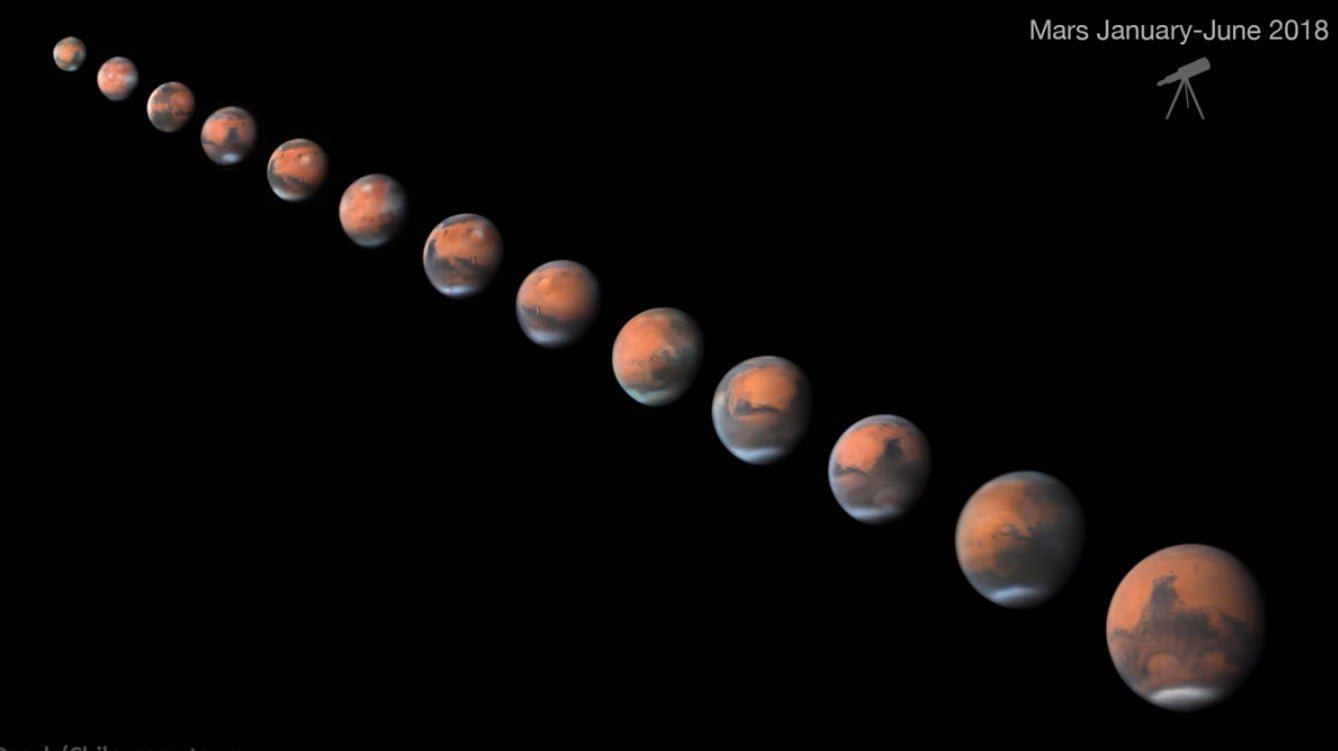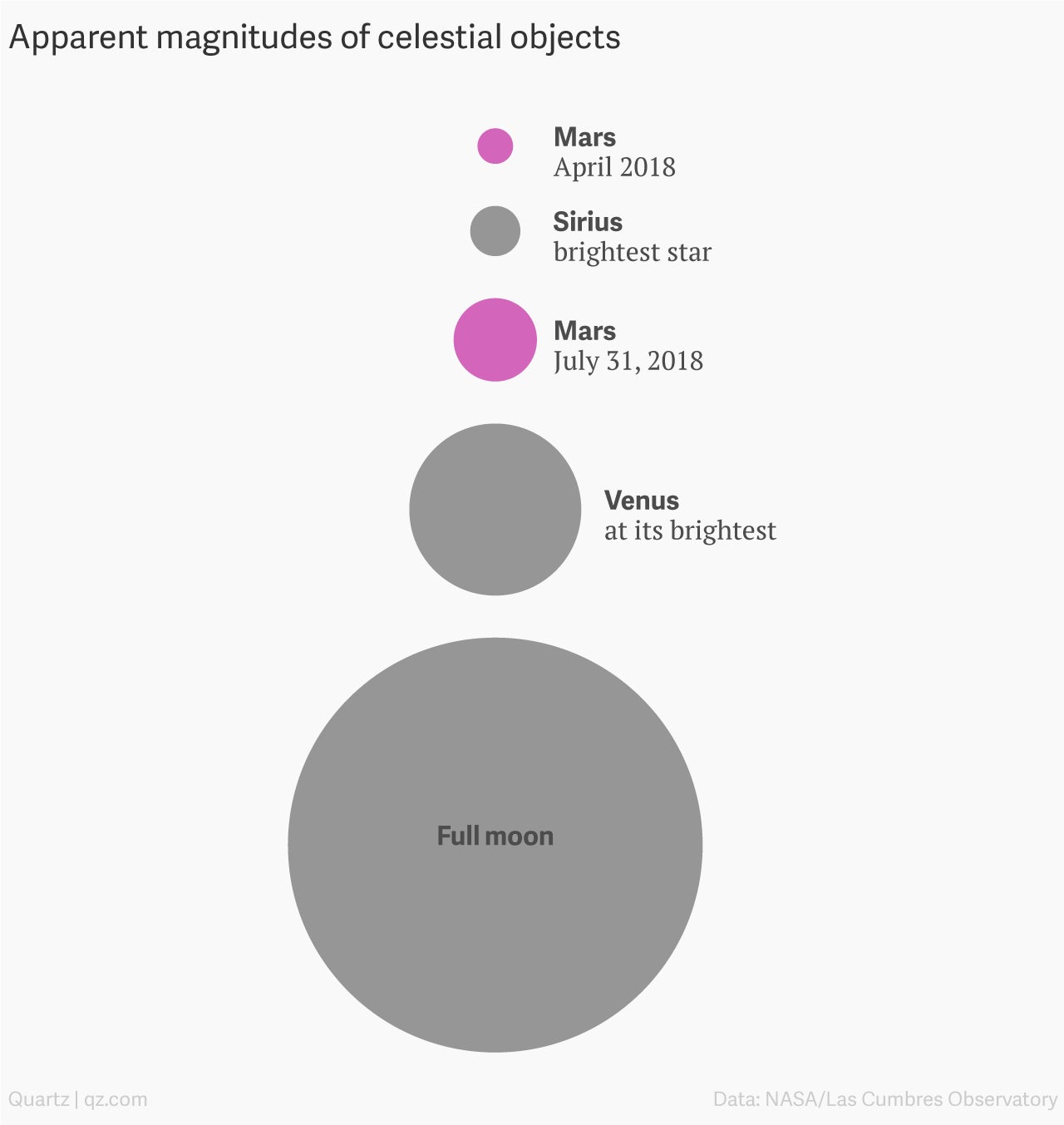July 31 is the day to see Mars with the naked eye
This week, our neighboring planet Mars will be the closest it’s been to Earth in 15 years—making it super easy to see from the night sky.



This week, our neighboring planet Mars will be the closest it’s been to Earth in 15 years—making it super easy to see from the night sky.
On July 31 at 3:50am US eastern time, Mars will come within about 35.8 million miles (about 57.6 million kilometers) of our planet. Celestially, this is relatively very close; on average, Mars is about 50.2 million miles away from Earth. This event, called a “close approach,” happens rarely. The last time the red planet was so near to our neck of the galactic woods was in 2003.
Every two years, Mars is in opposition with the sun about, meaning that the Earth lines up directly in the middle of the sun and Mars. In 2018, this opposition occurred on July 27, the same day as the longest lunar eclipse of the century. According to EarthSky, Mars is also nearing the end of a 15-year orbital cycle that brings its orbit closest to our own. The two events overlapping mean that Mars will look like a giant red star—brighter than even Jupiter, the largest planet—for the next couple of months (and has been since about July 7).
Mars is only about half the size of Earth, and usually appears as little more than a speck in the sky, but its current proximity makes it far more visible. Starting at about sundown in the northern hemisphere, you should be able to see the red planet without a telescope, even in a city (assuming the weather is clear). With a telescope, you should, in theory, be able to make out details of the planet—except for the massive dust storm currently engulfing the planet.
Aside from being bright, Mars will also appear much larger than usual. Exactly how much bigger and brighter can be calculated using “apparent magnitude,” a measure of the way an object looks in the sky based on its brightness and proximity. The more visible the object, the lower its apparent magnitude. The sun, at -26.7 (according to Las Cumbres Observatory in California), is far and away the brightest object in the Earth sky. The full moon is -12.6. According to NASA, on July 31, 2018, Mars will register at -2.7, compared to just -0.5 a few months ago, in April.
If you’re not able to see Mars this week, the red planet will still be visible in the night sky through the first few months of fall. It’s a good reminder to look up into to the sky any night you can.